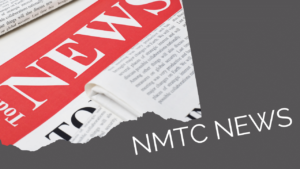Tell Your Senators to recommend a permanent extension of the New Markets Tax Credit as part of their comments to Senators Baucus and Hatch.
Earlier this month, Senators Max Baucus (D-MT) and Orrin Hatch (R-UT), the Chairman and Ranking Member of the Senate Finance Committee, asked for comments and feedback from their Senate Colleagues regarding which existing tax incentives and tax credit should be retained in a reformed tax code. Comments are due to Baucus and Hatch by July 26th.
In light of this request, we need you to reach out to your Senators and urge them to include the New Markets Tax Credit as a priority for tax reform.
Making comments and recommendations on the Internal Revenue Code is an enormous task. At the bottom of this email is a memo to share with Senators that includes key arguments for NMTC permanent extension and expansion of credit authority. Senators may use this as sample text for their requests to Baucus and Hatch
——————————————
Request for Baucus and Hatch:
The New Markets Tax Credit is an established program with a record of achievement. In any tax reform legislation, the Finance Committee should include:
1. A permanent, or indefinite authorization of NMTC;
2. an increase in credit authority of approximately 40% and index that amount to inflation for future years; and
3. An exemption for NMTC investments from the Alternative Minimum Tax. These provisions are included in S.1133, the New Markets Tax Credit Extension Act of 2013.
Additional background points on the New Markets Tax Credit:
The New Markets Tax Credit (NMTC) has made significant contributions to the local economies in low income urban and rural communities. Between 2003 and 2011, NMTC investments directly created some 350,000 jobs at a cost to the federal government of $19,500 per job and leveraged $55 billion in capital investment to credit starved businesses in communities with high poverty and unemployment rates. These investments have directly created over 350,000 jobs. To put that number in perspective, during that same period, the US economy created a net of 2.2 million jobs.
The impact of the NMTC goes well beyond direct job creation. NMTC investments often promote further investment and economic growth in underserved communities, providing meaningful positive spillovers for the rest of the community. The NMTC Coalition’s NMTC Economic Impact Report found that the NMTC created an additional 200,000 indirect and induced jobs in low income communities between 2003 and 2010. The income taxes paid by the business and the jobs created through NMTC investments offset the cost of NMTC to the federal government.
Finally there is a substantial return on investment to the federal government. Of the $55 billion in total project costs, $27 billion was direct NMTC investments. The revenue estimate associated with this investment totaled $7 billion. Therefore, the return on investment to the federal government is $8 to $1.
The NMTC has done this without creating more complications for individual taxpayers – virtually all investors are corporations or private financial institutions. In addition, the decision-making and project underwriting are the responsibility of community development organizations with deep ties to the communities in which they work. Washington does not pick winners and losers.
The New Markets Tax Credit is an established program with a record of achievement. In any tax reform legislation, the Finance Committee should include:
1. A permanent, or indefinite authorization of NMTC;
2. an increase in credit authority of approximately 40% and index that amount to inflation for future years; and
3. an exemption for NMTC investments from the Alternative Minimum Tax.
These provisions are included in S. 1133, the New Markets Tax Credit Extension Act of 2013.
The principal policy objective of New Markets Tax Credit is to increase the flow of private sector capital to communities long overlooked by market forces. The program was authorized in December 2000 as part of the Community Renewal Tax Relief Act (P.L. 106-554). While today’s economy differs significantly from the 2000 economy, the challenge of attracting investment capital to underserved areas persists.
Then – as now – the basis for the Credit is that business success depends on access to capital. There is substantial evidence that low and moderate income areas continue to be underserved by private sector capital. This lack of capital stifles entrepreneurs and impedes growth leading to urban decay and economic stagnation in small towns and farming communities, despite opportunities for investment. There is substantial evidence that the NMTC is an effective incentive to encourage private sector investment in underserved low income areas. A 2007 report published by the U.S. Government Accountability Office (GAO) indicated that 88% of investors surveyed would not have made the investment in the low income community without the Credit. Exempting NMTC investments from the Alternative Minimum Tax will further expand the NMTC investor market bringing in more corporations and smaller regional banks, thereby increasing pricing.
Over the last three years, NMTC investments have averaged more than $5 billion annually. The credit authority authorized in S.1133 allows a level of approximately $4.8 billion for 2014, which is indexed to inflation in the out years. This is consistent with previous levels of investment activities and assures a continued flow of capital to communities.
The importance of the New Markets Tax Credit is underscored by trends in federal community development spending. According to Congressional Budget Office estimates, as measured as a share of GDP, federal community development spending has fallen by 75% since 1980. The FY 14 budget cuts Community Development Block Grants to the 1977 rate. In many rural and urban communities, NMTC is one of the few financing sources available for community revitalization.
Data from the CDFI Fund, along with the NMTC Coalition’s annual surveys of NMTC activity, shows that 100% of NMTC investments go to distressed communities and more than 70% go to communities in extreme distress. The program is reaching communities that far exceed the statutory requirements for poverty and economic distress.
Furthermore, the NMTC accomplishes this at a relatively low cost to the federal government. While the nominal rate on NMTC investments is 39%, there is, in effect, an exit tax for investors at the end of the compliance period. The effect of this is to reduce the cost of NMTC to federal government to 26%.





